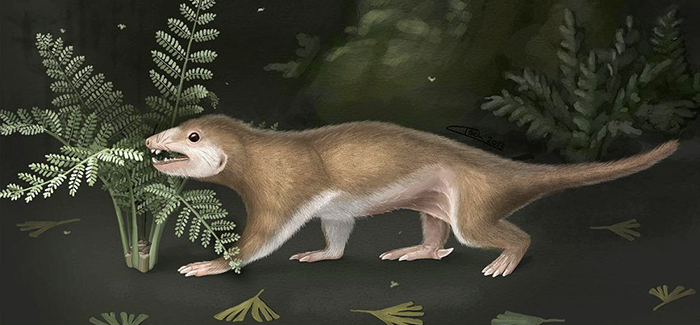A Jurassic fossil recently discovered in Inner Mongolia, China, by biology professor Zhe-Xi Luo and his team demonstrates that in the evolutionary march from the reptilian to the mammalian, hair and fur popped up early. In the August 8 issue of
Nature, they describe the features of what Luo calls our “great-great-grand uncle 165 million years removed”:
Megaconus mammaliaformis, a squirrel-sized terrestrial animal named for a large cusp on its first cheek tooth.
Megaconus is only the second known premammal with fur, and the clear halo of guard hairs and underfur residue preserved in its fossil are the oldest evidence of fur and hair in ancestral mammalians.
Megaconus moved like a mammal—its hind legs and claws would have given it a gait like an armadillo. Its anklebones, vertebral column, and the middle ear attached to its jaw, though, were all reptilian.
The high degree of political activism and social movement in cities is closely tied to their urban environments, says Chicago sociologist Terry Clark. Writing in the June 9
Urban Affairs Review, Clark and coauthor Brian Knudsen, from Urban Innovation Analysis, interpret the US Census tally of social movement organizations (SMOs) in more than 30,000 ZIP codes based on a host of demographic and socioeconomic statistics. Denser populations, more mixed land uses, more mixed building ages, and shorter city blocks all correlated strongly with higher incidence of SMOs. Walking, they conclude, mediates these relationships, providing a crucial way for individuals to directly engage with their cities, which, in turn, become “locales for social change and hubs of innovativeness.”
Stress has long been associated with the development of cancer. Now UChicago researchers in medicine and psychology think they’ve found a biological link between the two: chemical signals released by fat cells. In the July
Cancer Prevention Research, breast cancer oncologist Suzanne Conzen and her collaborators report that the stress of chronic social isolation can change the behavior of mammary gland fat cells. Chemical signals from these cells encourage the growth of precancerous epithelial cells, which accelerate the development of breast cancer. The researchers found that female mice isolated after weaning showed increased expression of three genes central to metabolizing glucose. This caused mammary fat cells to roughly double their glucose intake and triple their output of leptin, which stimulates epithelial cell growth. The study’s authors suggest that changes in fat cell behavior could be used to anticipate breast cancer and possibly intervene preemptively.
There’s a longstanding enigma embedded inside chondrites, the largest and most common type of meteorite. For over a century, researchers have been unable to explain the origin of chondrules. Molten droplets in space, they solidify as the small, glassy spherules often found inside chondrites. UChicago cosmochemists Lawrence Grossman and Alexei Fedkin posit a solution in July’s
Geochimica et Cosmochimica Acta. After discovering sodium in the chondrules’ olivine crystals, they reconstructed how minerals condensed from the primordial solar nebula. Then using mineralogical calculations that followed up on work by UChicago geophysicists Fred Ciesla and Steven Simon, they suggest that high-pressure collisions between early cosmic bodies generated chondrules.

